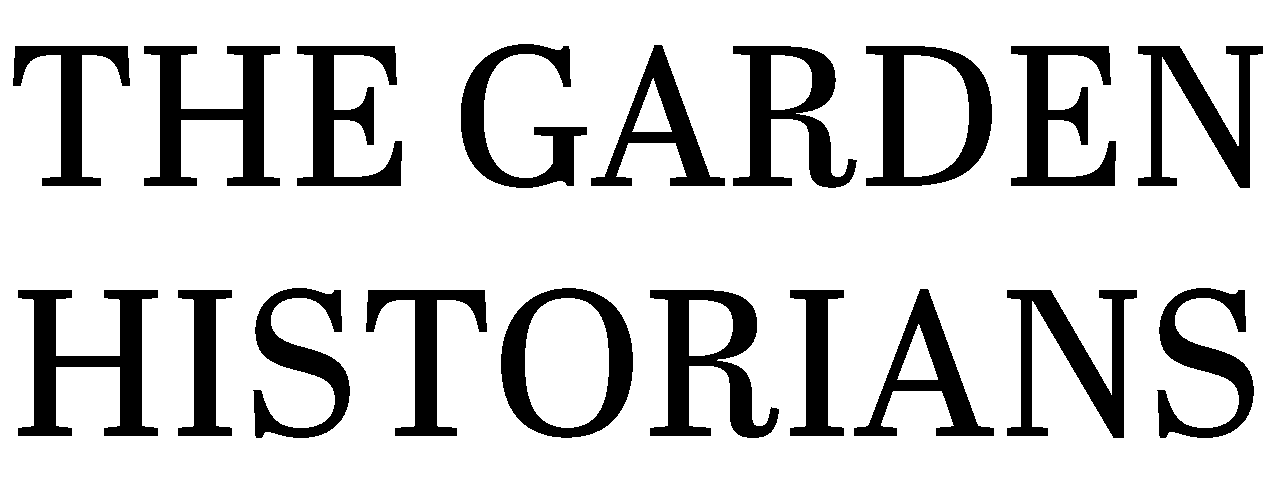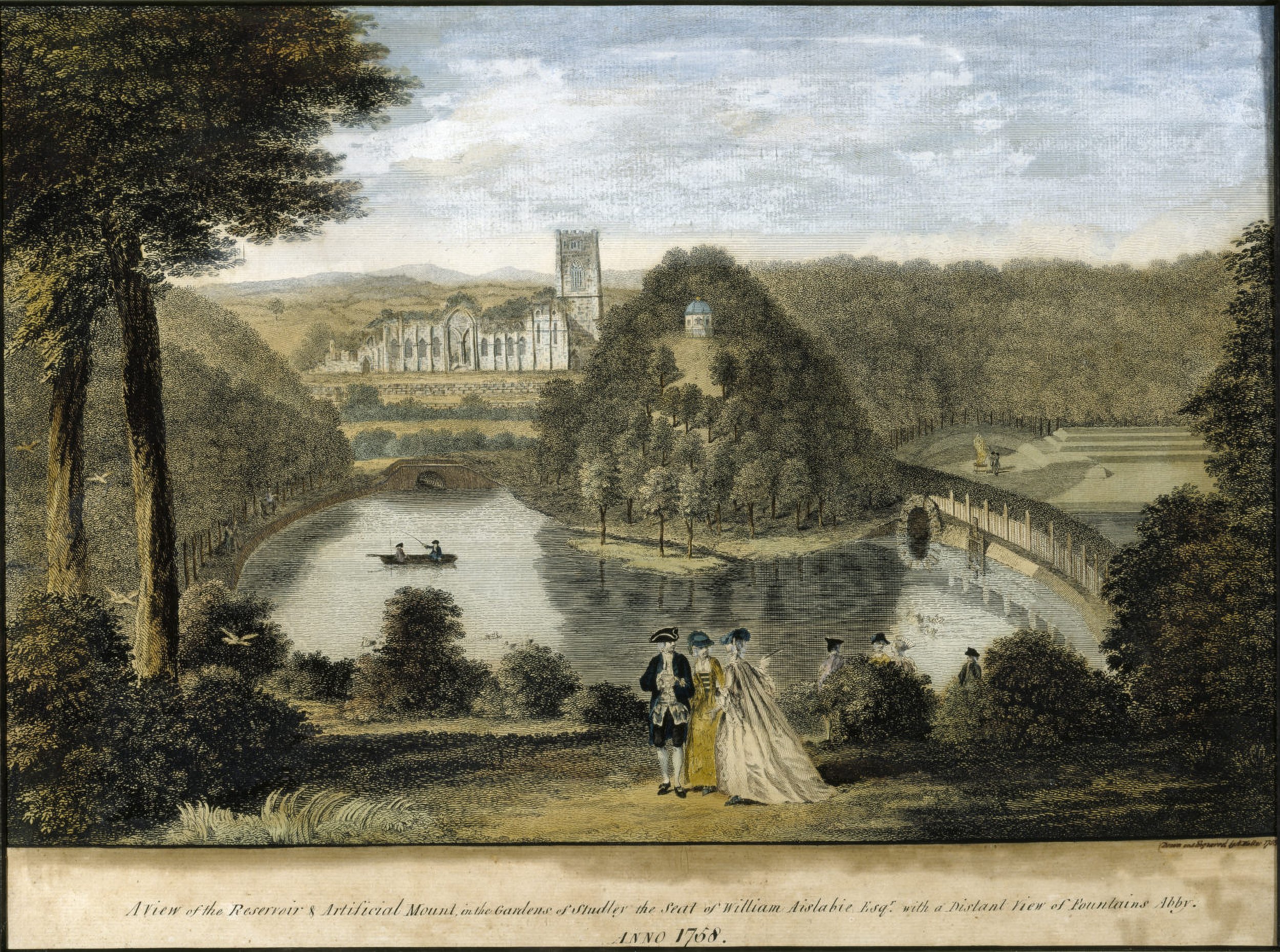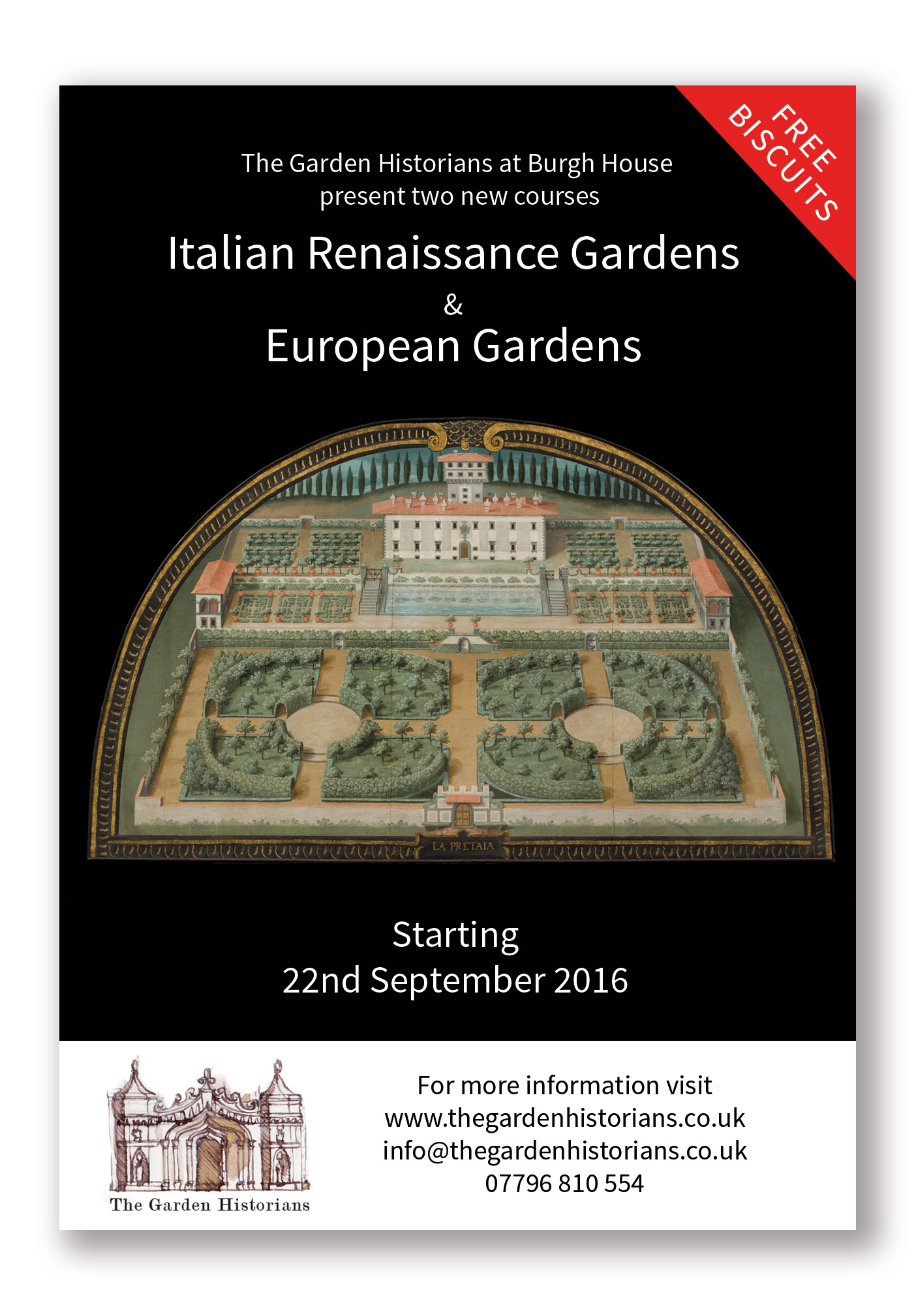Course Archive
We have taught at Burgh House in Hampstead, London and online for over a decade. We’ve covered a wide range of topics and themes, amassing a loyal following of students who return year after year. Please enjoy some of our past highlights below.
2025
From 3rd October 2025.
A 5-week online course
Why not take an excursion to Italy from the comfort of your armchair? Join me for a series of lectures on "What I Did on My Holidays", exploring Italy’s most magical waterside gardens — from the Venetian Lagoon to the Alpine lakes.
We begin in Venice, where we visit the recently restored Orto Giardino del Redentore, with a moment to take in the Festa del Redentore fireworks shimmering over the lagoon. Then on to Trieste, where the romantic, fairytale of Castello di Miramare looks out across the Adriatic, its botanical gardens and historical collections evoking the spirit of 19th-century exploration.
Next, we journey to Lake Maggiore, to stroll among citrus trees and camellias on the Borromean Islands — the baroque splendour of the boat shaped Isola Bella and the botanical haven of Isola Madre. Our penultimate lecture takes us to Lake Como and the elegance of Villa Balbiano and its next door neighbour, the more well known Villa Balbianello (a star of James Bond and Star Wars) before concluding at the private Renaissance garden of the (now the hotel) Villa d’Este. Edith Wharton wrote in her Italian ‘Villas and their Gardens’ that even though Caroline of Brunswick had been busy creating an English garden there “the main lines of the Renaissance garden still exist!”.
Our final destination takes us on a journey with one of the finest Italian landscape architects of the 20th century, Pietro Porcinai. We begin at his swimming pool on Isola Polvese, overlooking the tranquil Lake Trasimeno, and follow his work through Venice, Treviso, and Florence, before ending our five weeks of lectures in Portofino, perhaps with an aperitivo in hand, as we take in his stunning pool with a view of the Ligurian Sea.
Come travel with me, no passport needed, just a love of gardens, history, and Italian charm.
Information
£150.00
A 5 week course online
1. Venice 3rd October
A hidden garden opening onto the lagoon: the newly restored Garden of the Convent of the Church of the Most Holy Redeemer. With ancient workshops and a historic greenhouse, this sacred garden has remained closed for 500 years—until now.
2. Trieste 7th October
Castello di Miramare — a romantic botanical garden perched on the edge of the Adriatic, created for Archduke Ferdinand Maximilian of Habsburg-Lorraine and Princess Charlotte of Belgium. A dream garden... until history took a darker turn.
3. Lake Maggiore – The Borromean Archipelago 17th October
Two islands, two unforgettable gardens:
Isola Bella, a baroque fantasy of grottoes, shellwork, and cascading terraces.
Isola Madre, its elder sister, a botanic ‘Eden’ rich in rare and exotic specimens.
4. Lake Como 24th October
Three gardens along the lakeshore:
Villa Balbiano
Villa del Balbianello
And the timeless elegance of Villa d’Este
Each one a masterpiece of Italian garden design, over looking the still waters of the lake.
5. Lake Trasimeno and Isola Polvese 31st October
Pietro Porcinai carved a garden and swimming pool out of an abandoned sandstone quarry for Count Giannino Citterio. But this isn’t our only stop with Porcinai...
We’ll also virtually visit: Villa Terrazza in Florence, the pool and gardens of Villa di Rovero in Treviso, and finally, ending in Portofino, where his garden and pool overlook the Ligurian Sea.
FROM 3RD OCTOBER
EVERY FRIDAY AT 6PM - 7PM GMT
All our Zoom courses are recorded and a link will be sent out after each class.
The formal garden was still in fashion when George I took the throne of England, but its days were numbered. Fashion may move more slowly in landscape, but it began a most definite, if gradual change, slipping into a more relaxed ‘natural’ style. Accompanied by a literary and philosophical movement and the reading of classics like Virgil, Pliny, and Horace. From this, we start to see the incorporation of classical ideas and elements into the garden. Wrapped up too in the politics of the age, the shock of the South Sea Bubble (a financial crisis), which had profound effects on the wealth and fortunes of the aristocracy and the rising middle class. This economic upheaval impacted the acquisition and maintenance of country estates, and competition among the aristocrats and the nouveau riche for the most fashionable designers grew. Horticulture and science were making huge developments in the world and saw significant advancements which also contributed to the growth of more experimental and diverse garden designs. This new course will examine gardens in England from 1714 to 1750 and the art and artists that inspired and recorded them.
The Grand Tour – especially Italy
Forest gardens – Bramham Park (1700-1731), Cirencester Park (1715-1740), St Paul's Walden Bury (1720-1725).
Stephen Switzer - Ichnographia Rustica and the Ferme ornée
Hartwell House and Balthasar Nebot
1st Duke of Chandos and the magnificent Canons pleasure grounds
Studley Royal, the South Sea Bubble
The new Arcadia and the movement towards the idyllic
Charles Bridgeman, Lord Petre, William Kent, Alexander Pope
The botanical (and everything else) collectors and the Empire
Information
£250.00
10 WEEK ONLINE COURSE
Our online Zoom course will begin on Thursday 25th September 2025 from
6 pm-7.30 pm GMT.
All our Zoom courses are recorded and a link will be sent out with notes after each class.
Don’t forget to look out for an announcement soon for our short courses, which wil feature three lectures on specific Italian gardens.
Three women of Influence - one restorer of castles, one traveller and advocate of vaccination and one self-trained artist botanist – all women who broke the rules of their times.
They were pioneering figures in literature, art and social thought, with actions and ideas that were ahead of their time.
Anne Clifford, called Queen of the North - 12th May
She was born in Skipton Castle in 1590, to the Earl of Cumberland and Lady Margaret Russell (daughter of the 2nd Duke of Bedford) close friends of Elizabeth I. Clifford danced in masques with Queen Anna of Denmark, married twice, became mistress of Knole and next of Wilton (when landscape designer Isaac de Caus was remodelling the house and laying out the gardens). She never gave up the fight for her own inheritance which her father willed away from her. Everyone from the King (except the Queen) and Cromwell told her to give up the battle, she was described as unstoppable "as the Rhone river" and indeed she was eventually successful. Once in control of her inheritance she began to restore the many churches and at least six castles on her estates. She commissioned art and literature, and wrote her own diary or autobiography.
Lady Mary Wortley Montagu - 19th May
Born Lady Mary Pierrepont on 15 May 1689 at the mediaeval Holme Pierrepont Hall in Nottinghamshire. She was toasted by the Kit-Cat club as the beauty of the season, when she was seven years old. Later her writing and travelling brought her fame, especially her poetry and her Letters from Turkey, written whilst in Constantinople. The Letters gave a view into a culture unknown to the British at the time – she delved into Ottoman culture, society, and the lives of women there. Her writing is witty with an intellectual depth, revealing to us the inner thoughts of a women who challenged the gender norms of her time. Whilst living in the Ottoman Empire she witnessed vaccinations for smallpox. Lady Mary is remembered for bringing this pioneering work -promoting smallpox inoculation in Britain and for her contributions to literature and women's rights.
Mary Delaney - 26th May
Mary Delany born in 1700 became an artist and botanist, who created highly detailed paper collages of plants.
Her early marriage to Mr Pendarves who drank excessively, died in his sleep and never changed his will (meaning she inherited nothing), left her a destitute widow at 25. She found herself living with relatives and friends, including the Duchess of Portland. The Duchess included Mrs Pendarves in her artistic and scientific circle and introduced her to Joseph Banks. Widowed for second time at the age of 68, Mrs Pendarves, now Mrs Delaney, once again found herself at Bulstrode, with her old friend Margaret Bentinck, now the Dowager Duchess of Portland. Their shared interest in botany, led them on local plant hunting trips. Mrs Delaney began working on the collages or "paper-mosaicks", as she referred to them, that were to introduce her in her 70’s to a world of botanists, scientists and artists. In 1769, she translated William Hudson's 1762 Flora Anglica into English, only possible with her excellent botanic knowledge. She had no formal education in science but her works were highly respected by botanists of the time for their accuracy and detail. Her collages were often used as references by scientists, and they remain today important records of 18th-century plant species.
Information
COURSE COST
£75.00
3 WEEK ONLINE COURSE
Our online Zoom course will begin on Monday 12th May 2025 from
6 pm-7pm GMT.
All our Zoom courses are recorded and a link will be sent out with notes after each class.
The inspiration of French gardens and the Anglo-Dutch gardens and the evolution of the English garden in the late 17th century.
William and Mary invited from Holland to England in the late 17th century had a significant impact on English garden design. Their influence helped bring about a shift in how gardens were designed, particularly through the introduction of Dutch and Flemish styles that became integrated with English traditions. Their reign was to have an effect on garden design, with precise geometric layouts, and the extensive use of parterres and canals combined with exotic and rare plants. To show your allegiance to the new monarch you copied the garden style!
Water gardens already an element of English gardens began to metamorphose into reflecting pools and canals. especially during the late 17th century. They started appearing in royal gardens such as those at Hampton Court and St. James’s Park. Clipped hedges and the use of buxus became more popular for creating formal, structured spaces, topiary turned up in the parterres. The Baroque style was sweeping across Europe at the time, and already the influence of French and Italian gardens had filtered into English design. The grand formal layout of the Baroque gardens, symmetrical with wide axial views, peppered with sculpture in the form of fountains and statues, with mythological and antique subjects. Orangeries and pavilions became a necessity, places to sit in and also to place the new species of delicate plants in decorative pots.
This was the age when exotic plants flooded in from across the world, brought to England through trade routes by the Dutch and English East India companies. These expensive new varieties would be planted up quite sparsely in beds and parterres to allow them to be centre stage, showing them off rather than cramming them in for colour effect.
The English garden during this period became more structured, controlled, and ornamental, setting the stage for the further evolution of formal garden design. The Dutch style, combined with local traditions, gave rise to an aesthetic that would dominate English gardening well into the 18th century. With George London and Henry Wise taking the next steps at formalising even further the gardens of royalty and the aristocracy.
Topics covered include:
o William and Mary in England
o Daniel Marot
o Plant collecting and exotics
o The Privy Garden at Hampton Court Palace
o Westbury Court
o Kensington Palace
o The Brompton Park Nursery
o The formal gardens of George London and Henry Wise
o Blenheim, Longleat, Chatsworth, Burghley, Bretby, Cassiobury, Grimsthorpe, Canons, Wanstead and Hanbury Hall
Information
£250.00
10 WEEK ONLINE COURSE
Our online Zoom course will begin on Thursday 24th April 2025 from
6 pm-7.30 pm GMT.
All our Zoom courses are recorded and a link will be sent out with notes after each class.
The Mysteries of Il Sacro Bosco, The Garden of Monsters, Bomarzo
Once hidden away and forgotten, the Sacro Bosco (Sacred Wood) is a garden like no other. Made in the 1550’s by an Italian nobleman, its secrets have yet to be completely revealed. Enigmatic, encoded and mystical, academics continue to discover the meaning behind the grove with its literary allusions to Hypnerotomachia Poliphili and references to Ariosto’s epic poem, Orlando Furioso, illustrating his descent into madness. Set in a region rich with incredible Renaissance gardens (and perhaps sharing some of the workmen and yet so different from them) it has become a garden that has intrigued artists since being rediscovered in the 1940’s. The site influenced a generation of artists and filmmakers, including Niki de Saint Phalle’s Tarot Garden and Tomaso Buzzi’s La Scarzuola
Niki de Saint Phalle and Giardino dei Tarocchi
Niki de Saint Phalle, sculptor, painter and filmmaker represents something truly unique: combining her art with social and political activism, she was famous for shooting paint out of revolvers and spent her life creating her figurative, monumental ‘Nanas’. Inspired by Gaudi’s Parc Guell in Barcelona and the Sacro Bosco in Bomarzo, de Saint Phalle said she knew that one day she wanted to create her own ‘Garden of Joy’. That became a reality when 25 years later she made her Tarot Garden. Constructed on gifted land, she financed the making and building of it herself, 22 monumental sculptures inspired by the 22 Major Arcana, she even lived in one of the pieces, the Empress. Helped by friends, including her collaborator and husband Jean Tinguely (they were called “the Bonnie and Clyde of Art”), Marella Caracciolo Agnelli and the local postman, she created a garden of dazzling mosaic sculptures, now visited by seventy-five thousand people every year.
Tomaso Buzzi - La Scarzuola
A designer and architect, his work included urban planning, buildings, gardens, exhibitions, furniture, glass and interiors. His connection with Gio Ponte included not just design but writing for the wonderful Domus. He was aligned with the Novocento Milanese group and with the Studio di Sant'Orsola, which included Ponti, Michele Marelli, and Emilio Lancia. He was the designer darling who charmed Milanese nobility but by the 1950’s he was bored by the world he found himself in. He left it all behind to create his masterpiece, a miniature city on the site of a Franciscan monastery. This is the story of La Scarzuola his creation with versions of the Colosseum and the Acropolis, a Tower of Babel and seven theatres of different sizes for his own performances.
A History of English Gardens: The Stuarts
Taught online - from 23rd January 2025
An introduction to English gardens, this course will run in tandem with research for a new publication for Penguin, Random House: The Best 500 Gardens of England. It’s the perfect time to study, in-depth the stories and the development of some remarkable English gardens.
A History of English Gardens: The Stuarts
After the death of Elizabeth I and the almost explosive new reign of James I, what happened to the gardens of England? James inherited from Elizabeth, his 1st cousin twice removed, a throne and debt of over £117,000. Alas, James couldn’t help himself, Bishop Hacket said of him ‘for thrift and saving he could never be brought to think of them’. James’ motto should have been ‘spend spend spend’ because like a lottery winner he couldn’t stop. He had his eye on the greatest gardens of the time, the biggest and best palaces, making his courtiers swap properties with him. His court entertainments were lavish and spectacular. His masques, dances, gardens, and palaces just weren’t enough to keep him happy. James had his eye on some of the greatest gardens and made them his own or gave them to his family members.
Course highlights include
· Inigo Jones, designer of the century.
· Water gardens, ponds moats & marvels.
· The Palace of Audley End ‘too big for a king’
· The Tradescants, intrepid plant hunters and explorers.
· Francis Carew & the orange tree.
· Exotic animals and menageries in the garden.
· Salomon and Isaac de Caus & their grottos and automata.
· Andrè Mollet’s designs for Henrietta Maria at Wimbledon.
· The new gardens at Wollaton Hall.
· Wilton House & the fountain of three rainbows.
Information
10 WEEK ONLINE COURSE
Our online Zoom course will begin on Thursday 23rd January 2025 from 6 pm-7.30 pm GMT.
We will confirm an in-person option in due course.
*CHRISTMAS EARLY BIRD OFFER BUY BEFORE MIDNIGHT ON 14th DECEMBER AND GET £25.00 OFF - THE PERFECT CHRISTMAS GIFT!
Use the code SANTA25 at checkout.
2024
A History of English Gardens from the Tudors to the Stuarts
Taught in-person & online - from 3rd October 2024
An introduction to English gardens, this course will run in tandem with research for a new publication for Penguin, Random House: The Best 500 Gardens of England. It’s the perfect time to study, in-depth the stories and the development of some remarkable English gardens.
The first half of the course will focus on Tudor and Elizabethan Gardens and the great ephemeral entertainments that took place in the landscape. We will use archival materials to investigate the lost gardens and my recent visits to discover what remains.
Some of the gardens we’ll be studying will include: Hampton Court Palace, Godolphin, Kenilworth, Lyvden New Bield & Theobalds. Moving on from the Elizabethan entertainments we will also examine, Jacobean and Stuart Gardens, the influence of Italy and the court masques of Inigo Jones. The designers of this period will include Salomon de Caus, Isaac de Caus, Inigo Jones and Costantini de' Servi and their gardens such as Greenwich Palace, Wilton House and Hatfield House.
Course highlights
John Gerard, Barber-Surgeon and head gardener to William Cecil, 1st Baron Burghley. His Herball was accused of having more than a touch of plagiarism
Francis Bacon's Essay Of Gardens 1625 and his country houses in Twickenham and Gorhambury
The Enstone Marvels, Thomas Bushell (protégé of Bacon) and his garden of Renaissance style water tricks.
John Tradescant, head gardener to 1st Earl of Salisbury at Hatfield House, nursery owner and collector of a cabinet of curiosities
How lost landscapes are presented to today's garden visitor.
Information
Our In-person course will begin on Thursday 3rd October 2024 from 1pm - 2.30pm at London’s Burgh House for 10 weeks with a
half-term break on Thursday 31st October.
Our online Zoom course will begin on Thursday 3rd October 2024 from 6pm-7.30pm with a half-term break on Thursday 31st October.
2023
The Botanic Gardens. The Physicians, the Botanists and the Colonial Collectors starts 26th January 2023
Taught on zoom from Thursday 26th January 2023 at 10.30am
10 week course
We’ll be continuing our journey across the globe in search of plants and their riches. This term we will travel across the Atlantic Ocean and then off to the south seas, take your travel sickness pills with the Physicians, the Botanists and the Colonial Collectors
Below are the themes and topics we’ll be covering over our ten weeks:
· Botanic illustration
· Rio - the Portuguese and the sad tale of the pau brazil
· Berlin
· Copenhagen - Tresco - the USA
· Pineapples - Agnes Block to Hawaii
· Female botanists
· France, Royal patronage and their gardens
· Captain Cook and Joseph Banks
· Kew Gardens
· Glass houses
This zoom course welcomes new and returning students alike.
Online Course
1.5 hours a week for 10 weeks
Price
£230.00
Information
This course will be taught via Zoom from Thursday 26th January 2023 at 10.30am - UK time and each following Thursday. A recording of each zoom session, along with lecture notes, will be emailed each week. The link remains active for one month.
Imperial College Courses
Transforming Gardens in Nineteenth Century Britain - Imperial College, London
This class is run in partnership with Leighton House, London and starts on Tuesday, January 31st for 5 weeks at 14:00 - 15:30 and is taught in person, At Leighton House, London. Please see the Imperial college link below for booking.
Course Outline
William Combe’s The Tour of Dr. Syntax was published in 1812, alongside prints by the celebrated cartoonist Thomas Rowlandson. In it, Combe satirised the sometimes pretentious claims made by followers of a new craze that arose in the early nineteenth century, namely the Picturesque. This almost cult-like movement led to passionate claims about nature and landscape gardens, which became easy targets for satirists like Combe and Rowlandson.
Today, words like romantic and the picturesque are used quite casually and we probably do not give much thought to when or where they started. So it might surprise us to learn how recently these words entered the English language, and that their use has such a close relationship to landscape gardening.
In this course Deborah Trentham invites us to join her on a fascinating, and entertaining, journey through the gardens of nineteenth-century Britain, to discover the ideas, personalities and ambitions of the gardeners behind them. From the picturesque tours of Dr Syntax to Frank Crisp's Matterhorn and Gertrude Jekyll's 'natural gardening', the nineteenth-century British garden is full of surprises. From curious inventions of the industrial age to the enthusiasm of plant hunters to discover new species, the results ranged from the extraordinarily beautiful to the downright bizarre.
Whether you enjoy gardening or visiting gardens, or are just fascinated by history, art history or the renaissance world, join us on this exploration into the history of gardening.
The in-person classes at Leighton House in London are informal and interactive, so discussions with the group of your experiences of visiting historic gardens will be welcome additions. However, there no formal course work and no previous knowledge of garden history is required.
Price n/a
Attendance certificate
Those who attend at least 80% of the course sessions will receive an attendance certificate from Imperial College London upon completion of the course.
Botanic Gardens: A Story of Beauty, Corruption, Medicine and Pirates, Imperial College, London.
Starts on 16th January 2023 for ten weeks. Please note the course is run and managed by The Imperial College and all enquires should be made through their website. Follow the link below to The Imperial College website.
On a fascinating online course, Deborah Trentham of the Garden Historians will lead us on a journey to discover the remarkable history of botanical gardens. With their earliest origins stretching back to the ancient Levant, botanical gardens as we know them began life in the Middle Ages as medicinal herb gardens, but they developed rapidly in the Renaissance, not least under the patronage of the Italian courts, to become significant status symbols and repositories of scientific knowledge about the nature and the world. Later this patronage was taken up by Western monarchs, not least Louis XIV of France and George III of Great Britain.
On the course we will see how early garden-makers were inspired by classical literature, drawing on the descriptions of ancient Roman gardens in the letters of Pliny the Younger and the poetry of Ovid and how renaissance artists were important too in the development of the garden.
But botanical gardens were also caught up in the growth of empire in the early modern period, as Western plant hunters began to travel the world alongside traders, colonisers and event pirates in search of ever more unusual and exotic plants to add to their gardens' collections.
Whether you enjoy gardening or visiting gardens, or are just fascinated by history, art history or the renaissance world, join us on this extraordinary exploration into the birth of the modern gardening.
The online sessions are informal and interactive, so your experiences of visiting historic gardens will be welcome additions. However, there no formal course work and no previous knowledge of garden history is required.
Live Online Course
This course will be taught live online (via the internet). To take part in the course you will need a suitably equipped device for session attendance each week on the weekday and time shown above.
Course Programme (subject to modification)
The earliest records – texts revealing botany in Egypt and plant use in ancient times
The Kingdom of Flowers – China – oranges and camellias
The rediscovery of the ancients – texts and gardens in the Renaissance
Pisa, Padua and Florence – gardens for learning and collecting
Portugal – plants, spices and parrots
Spanish botanic discoveries and Philip II’s garden notebook
Herbals and a little plagiarism
Dutch East India Company
Botany & Piracy
Additional Reading
There is no compulsory reading required for this course, and there is no set course text.
Price
Follow this link to The Imperial College’s website for more details and how to enrol
Information & Booking
The course begins 16th January 2023. This course is booked via the link above and run by The Imperial College, London. Your tutor will be Deborah Trentham of The Garden Historians
NB - Please note the course is run and managed by The Imperial College and all enquires should be made through their website.
Attendance certificate
Those who attend at least 80% of the course sessions will receive an attendance certificate from Imperial College London upon completion of the course.
Italian Renaissance Gardens - Imperial College, London
Starts Monday 11th October 2021 at 18.00 GMT
Online Zoom Course
2 hours (including break) for 10 weeks
Information
This course is run by The Imperial College, London. Your tutor will be Deborah Trentham of The Garden Historians
Course Outline
Early Italian gardens, often belonging to monasteries, were enclosed by walls, and used for growing vegetables, fruits and medicinal herbs. How did they evolve into playgrounds of the mythical gods, with winded horses landing on Mount Parnassus, giants dipping into fishponds and bronze birds fluttering over fountains? The garden makers were inspired by classical literature, the descriptions of ancient Roman gardens in the letters of Pliny the Younger, the poetry of Ovid, his epic Metamorphoses crops up over and again in the landscape. The romantic stories of The Hypnerotomachia Poliphili, published in 1499, also had an important influence on the gardens. The book describes the adventures of Poliphile, looking for his love, Polia. He travels through incredible gardens, full of roses, labyrinths, and even giants – elements we shall find were recreated in the gardens of the Renaissance. Re Aedificatoria written by Leon Battista Alberti in the 1450’s, was based on the architectural principles of Vitruvius. Alberti said that the garden was the province of the architect, he also gave precise details of what should be included in the garden ‘ You should also have rare plants.... Trees should be aligned and arranged evenly, each tree aligned with its neighbours.”
The political symbolism of the Renaissance garden can be seen in the Florentine gardens of the Medici, their patronage had a huge impact on the cultural and artistic history of Italy. Their great wealth acquired through banking, dominated the economic, financial and political world of Florence. They used gardens to demonstrate their power but also to enjoy and party in. They built some of the most original gardens of the period with sculptures and grottoes designed by some of the greatest artists of the period. In Rome while the city was built up sculpture was being excavated, with the rediscovery of some great ancient pieces. The Laocoon, the Apollo Belvedere, various river gods and Venus’ all collected up by which ever Pope was sitting on the throne of Saint Peter. Sculpture makes its way back into the garden to be displayed as it had been in ancient times, river gods sitting in pools. In 1504 Pope Julius II commissioned the architect Bramante to recreate a classical Roman pleasure garden next to the Vatican palace in Rome and the nearby Villa Belvedere. It’s terraces were divided by paths and flowerbeds, and was to be the outdoor setting for Pope Julius's collection of classical sculpture. In 1523 the Cortile del Belvedere was described "One enters a very beautiful garden, of which half is filled with growing grass and bays and mulberries and cypresses, while the other half is paved with squares of bricks laid upright, and in every square a beautiful orange tree grows out of the pavement, of which there are a great many, arranged in perfect order.
Gardens and villas to be investigated will include– Villa Medici (Fiesole and Rome), Medici gardens at Castello, Pratolino. Boboli Gardens, Sacro Bosco, Villa Lante, Villa Farnese (Caprarola), the Cortile del Belvedere.
20th Century America - A landscape for living
Course Outline
The Twentieth Century American Landscape
Film, Lifestyle and the Garden
Following the Influence of European gardens and the Modernist Movement on the American landscape.
Our course will follow several strands starting with Florence Yoch, greatly influenced by European gardens and chosen by the Hollywood moguls, Jack Warner and David O’ Selznick to design their personal gardens. She moved into set design working, uncredited, on the iconic ‘Gone with the Wind’.
Fletcher Steele was a designer who sought to incorporate the ideals of the European classic garden and the new Modernist Movement. His influence was to be profound on the younger Harvard students. Garret Eckbo said that Steele was 'the transitional figure between the old guard and the moderns’.
Thomas Church, the pivotal influence on many American designers to follow, was himself inspired by the European Bauhaus school and Finnish architect Alvar Aalto. We will examine Church as the pioneer who would shape the future direction in North America with his ‘California style’.
Other key figures include Lawrence Halprin and the Harvard three, Dan Kiley, James Rose and Garret Eckbo. Their work made it possible for the generation that followed, such as Martha Schwartz combining Fine Art and Landscape, focusing her controversial work on addressing the environment.
Gardens of the Gilded Age - America 1870-1900
Course Outline
Money, socialites, Italian gardens, English gardens, French gardens, murder and madness.
Gardens designed for a new elite, the super-rich ‘Robber Barons'. Combined with the architecture of Stanford White, William Rutherford Mead and Charles Follen McKim of McKim, Mead and White, these gardens created a dazzling new American style. They looked to Europe for inspiration and created huge French style formal gardens and breathtaking Italianesque estates. The public parks became incredibly important, especially as the cities started to build up and the populations increased. The new need for recreational space led to the founding of Central Park in New York, the work of Frederick Law Olmstead and Calvert Vaux. Literature and art of the period provide extra clues, such as the writing and gardens of Edith Wharton and the paintings of John Singer Sargent.
Course taught in 2020
Due to the Coronavirus we were unable to continue teaching at Burgh House in London and switched to regular teaching via zoom.
Gardens of the Gilded Age - America 1870-1900
Taught on zoom from 25th September 2020
10 week course
Money, socialites, Italian gardens, English gardens, French gardens, murder and madness.
From the Lemoine Loring House in Pasadena, California to the extraordinary Tiffany estate of Laurelton Hall in New York we will track the gardens designed for a new elite. Combined with the architecture of Stanford White, William Rutherford Mead and Charles Follen McKim of McKim, Mead, and White, the gardens created a dazzling new American style. Taking in the magnates and their creations such as William Randolph Hearst’s Hearst Castle and the establishment of Palm Beach.
Literature and art of the period provide extra clues: Mark Twain, the novels and gardens of Edith Wharton and the paintings of John Singer Sargent.
We will Investigate along the way the women who create and document the gardens. One of the founder members of the American Society of Landscape Architects, Beatrix Farrand, the photographer who recorded the images, Frances Benjamin Johnson and garden designer Ruth Bramley Dean, who designed the gardens for the now infamous, Grey Gardens of the East Hamptons.
The Bonkers Renaissance course
A zoom course taught from June 4th 2020
10 week course
An unusual course in that it will take in European countries from 1500-1600, mainly focusing on Italy, France and England – our main protagonist is Catherine de’ Medici. Following her journey from the Vatican and a convent in Florence to the Valois Court of France. She took with her artists, architects, garden designers and occultists! The Renaissance gardens of Italy with their sculptures, fountains, grottoes and water play can be seen on a lavish scale used by Catherine in her ‘magnificences’.
Her ‘magnificences’ most often held in the gardens of her many palaces would include, ballets (she is credited with the invention), plays, huge amounts of scenery and incredible sights such as whales and giant tortoises. Her aim was not purely for fun and fantasy but was politically driven to promote the power of the Valois dynasty. The gardens themselves were already pleasure centres containing menageries, aviaries, water extravaganzas and exotic garden elements. The course will look at the influence her court had on the arts and gardens of England, and we will even investigate the food eaten and grown in the gardens. It’s serious but should be so much fun, it is going to be called ‘the bonkers Renaissance course’, because let’s be honest inventing ballet and introducing France to spinach and knickers is pretty bonkers.
The Medici Gardens of the Renaissance
A four week course taught in association with the Highgate Literary and Scientific Institution via zoom.
09 June 2020
Patronage and PowerIn the 15th Century The Medici were the owners of the largest banking house in Europe, their power and privilege was displayed in their patronage of artists and architects. They developed a new form of princely residence dedicated to health, leisure and the arts. This rural villa and garden was to be copied not only across Italy but over Western Europe. No longer fortified castles or the more basic farms of their contemporary Tuscans, the Medici took up the idea of the classic villa model as outlined by Cicero. We will look at the early villas by Michelozzo di Bartolomeo Michelozzi as places for otium.
16 June 2020
The Utens LunettesIn the late 16th century Giusto Utens produced a series of birds-eye view paintings of the Medici villas, their landscapes and gardens. They were commissioned by Fernando I Medici to decorate the Villa Artimino. Of the original seventeen, fourteen survive. We will take a detailed look at the fourteen paintings and the secrets that they hold. Mount Parnasus, automated sculptures, cascades and caves can all be found on close examination. The wonderful detailing of the paintings reveals the most ephemeral element of the gardens, the planting, which will be revealed and discussed.
23 June 2020
Myths, Grottoes and Monsters in the garden.
Villa di Castello, Pratolino and the Boboli Gardens will be investigated. These gardens contained grottoes, giants and monsters, all of which were part of an overall narrative. References to Ovid and his Metamorphoses can be found in these gardens (and paintings) commissioned by many of the Medici, especially Lorenzo de’ Medici. The contributions of Tribolo, Georgio Vasari and Bernardo Buontalenti as artists and designers cannot be understated, not all their work survives and indeed nor was it meant to, as their design skills were used also for fireworks and making stage sets for the gardens.
30 June 2020
Health, Wealth and PartiesIn our final session we will seek to discover how and why the gardens were used, and who was allowed access. Medici gardens were places of outdoor pursuits, hunting, jousting, games and parties. They contained menageries of exotic animals and birds. They were used as a ‘theatrical space’ for immensely sophisticated celebrations, with equestrian ballets, naumachias, with incredible firework displays created by Bernardo Buontalenti (who probably would have preferred to have used his skills as a military engineer, the fortifications of the port of Livorno were his). Recent research has discussed the Villa di Castello as being designed as ‘a place of healthful resort’ where Duke Cosimo I de’ Medici would visit in times of ill health. John Dixon Hunt suggests that gardens, such as that at Castello, were used as aide memoires to trigger responses in the garden visitor.
Gardens of Lisbon & Sintra
Taught at Burgh House Hampstead
From 9th January 2020
Thursdays 10.30 - 12.30pm
Course Outline
The rich history of Portugal, from the Romans and Moorish invaders and conquerors to the later Portuguese discoverers, have shaped the palaces and gardens in the most unique style. Plants brought back from voyages and the temperate climate have added a lush, green vegetation to the gardens in the south of the country. During this term we will read the diaries of the English travellers in Portugal, including those of William Beckford and Lord Byron’s account of his visits to palaces and landscapes. Gardens to be studied include that of Sir Francis Cook’s Monserrate, Quinta da Regaleira designed by the Italian set designer Luigi Manini and the Palacio dos Marqueses da Fronteira with its azulejos tiles and magnificent water tank.
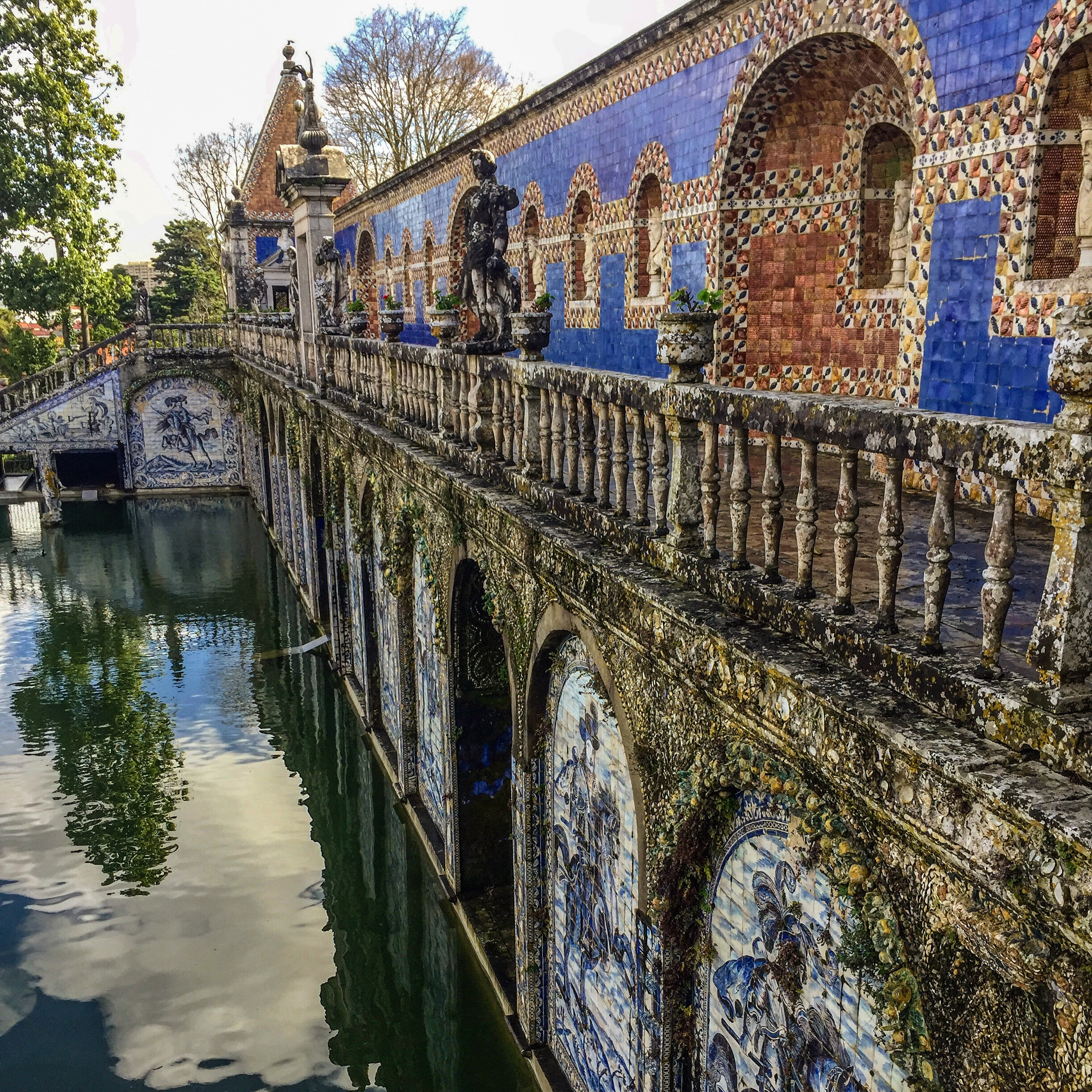
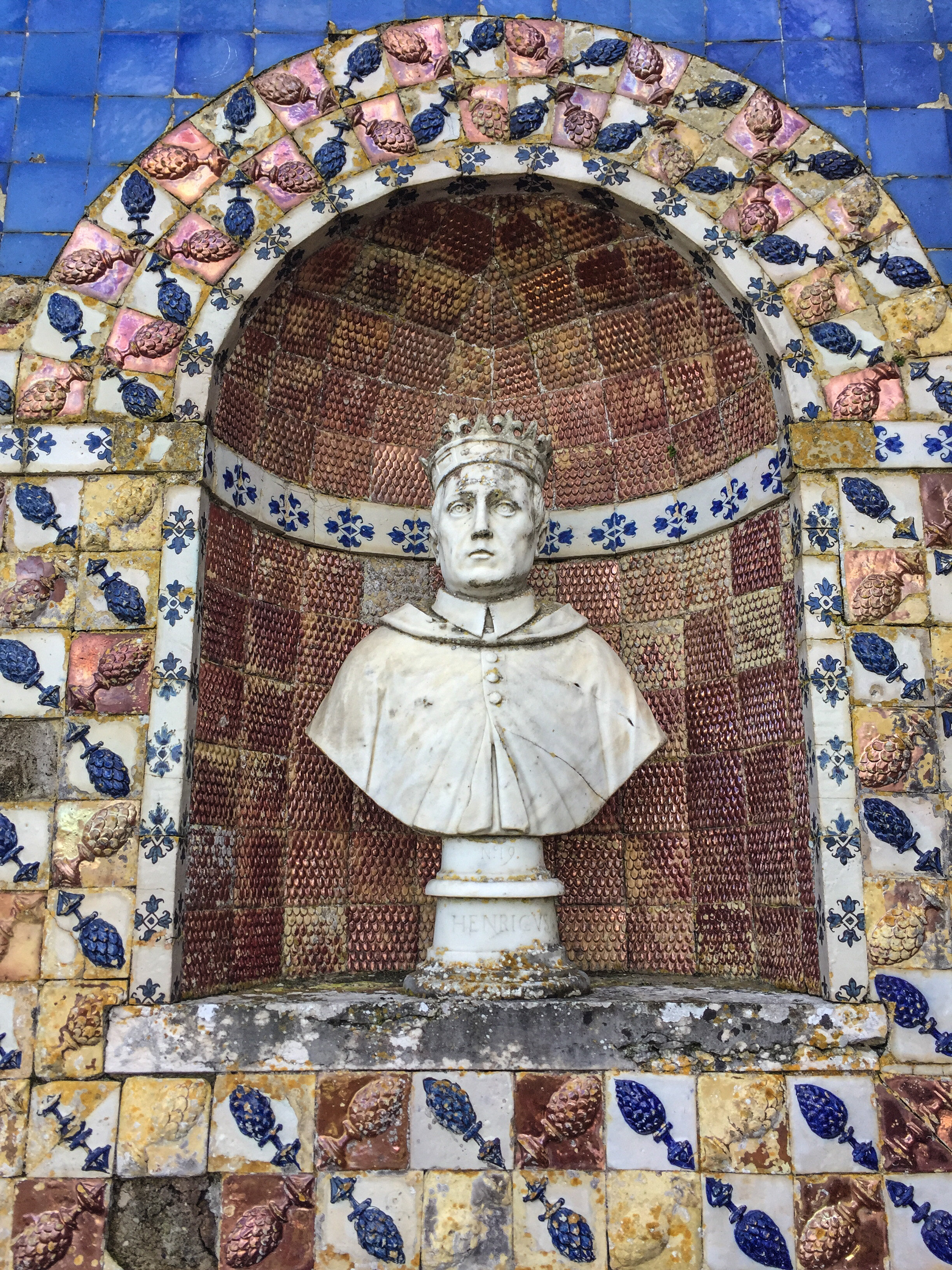

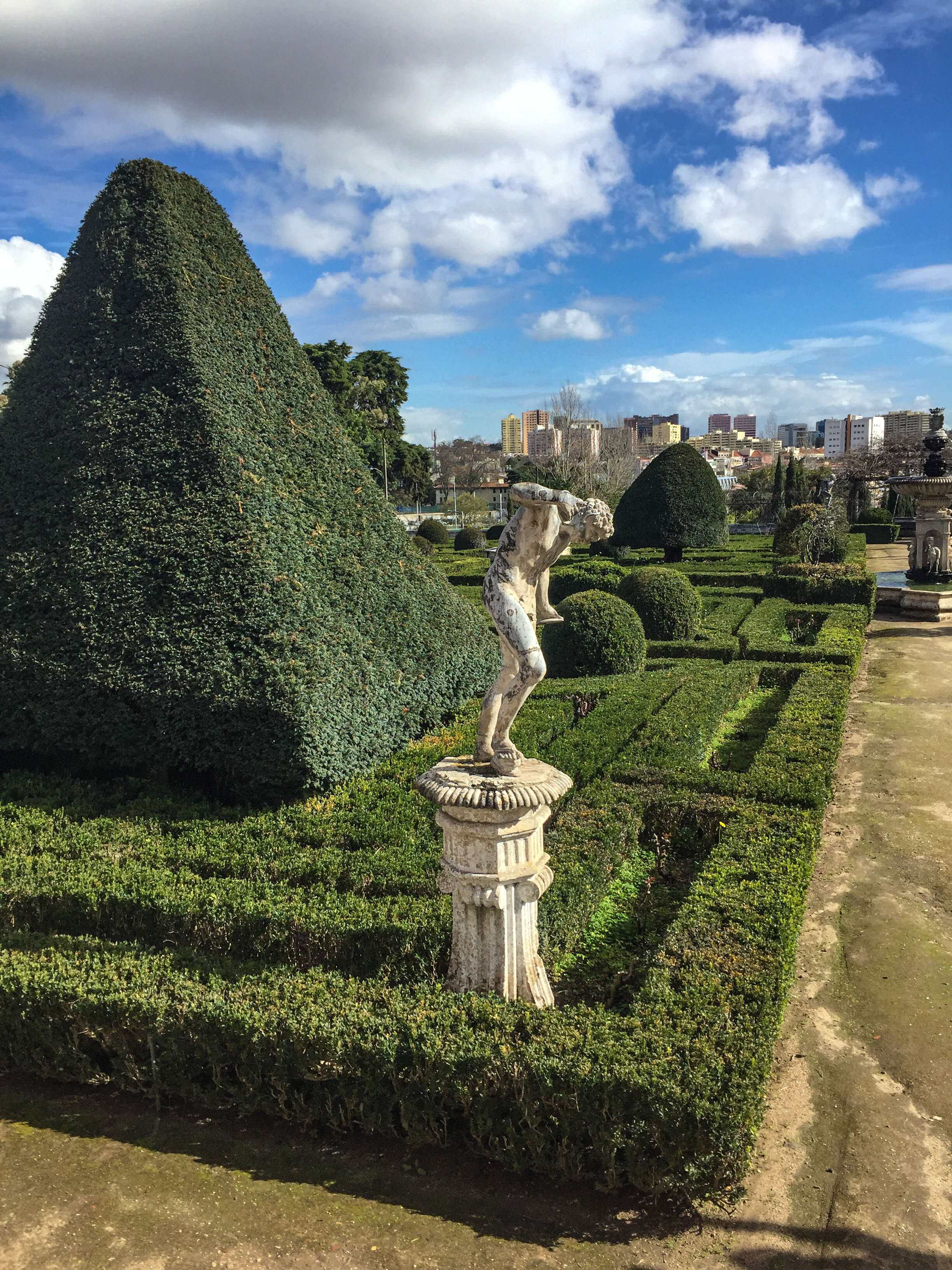
The English Garden Makers in Italy
Taught at Burgh House Hampstead
From 9th January 2020
Thursdays 1.30pm - 3.30pm
Course Outline
In corners of Italy are English and Italian gardens made by British residents, from the late 18th century up until present times. This term we shall discover botanic collections, gardens created for Italians by English designers, expats making gardens to remind them of home and others who looked only to Italy for their inspiration. Just north of Florence in the 19th century, the Englishman (although born in Italy) Frederick Stibberd, made his himself an English garden with temples, grottoes and fountains. The Sitwell’s created an Italian garden in Derbyshire and planted roses at Montegufoni. The Quaker Thomas Hanbury created with his brother the botanical collections of La Mortola In the early 20thc. Another botanic garden was made at Villa Taranto on the western shore of Lake Maggiore by the Scotttish Captain McEacharn. And in the 1970’s Lord Lambton was to be found garden making at Cetinale.
We will be visiting a botanical garden during the term.

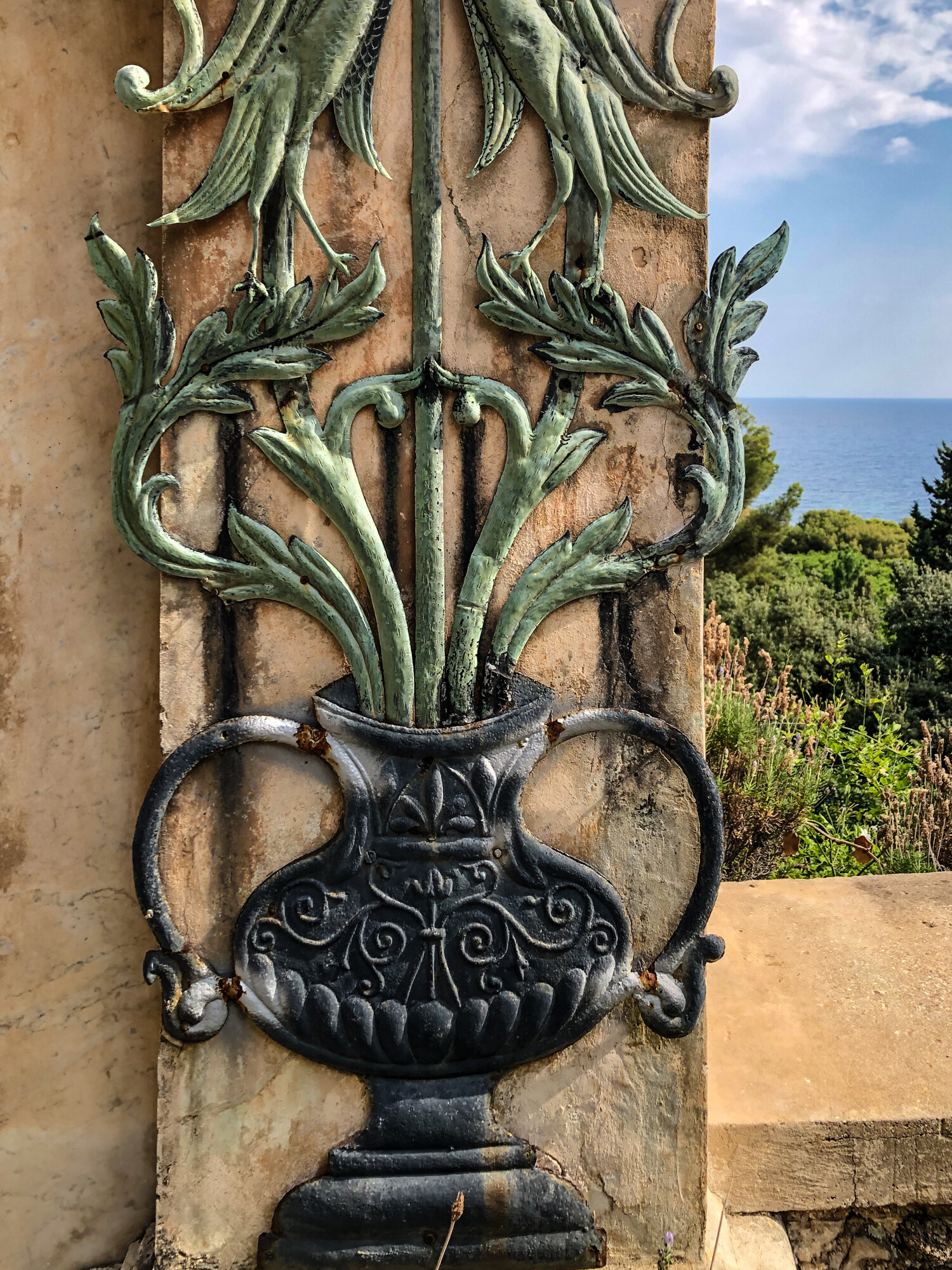
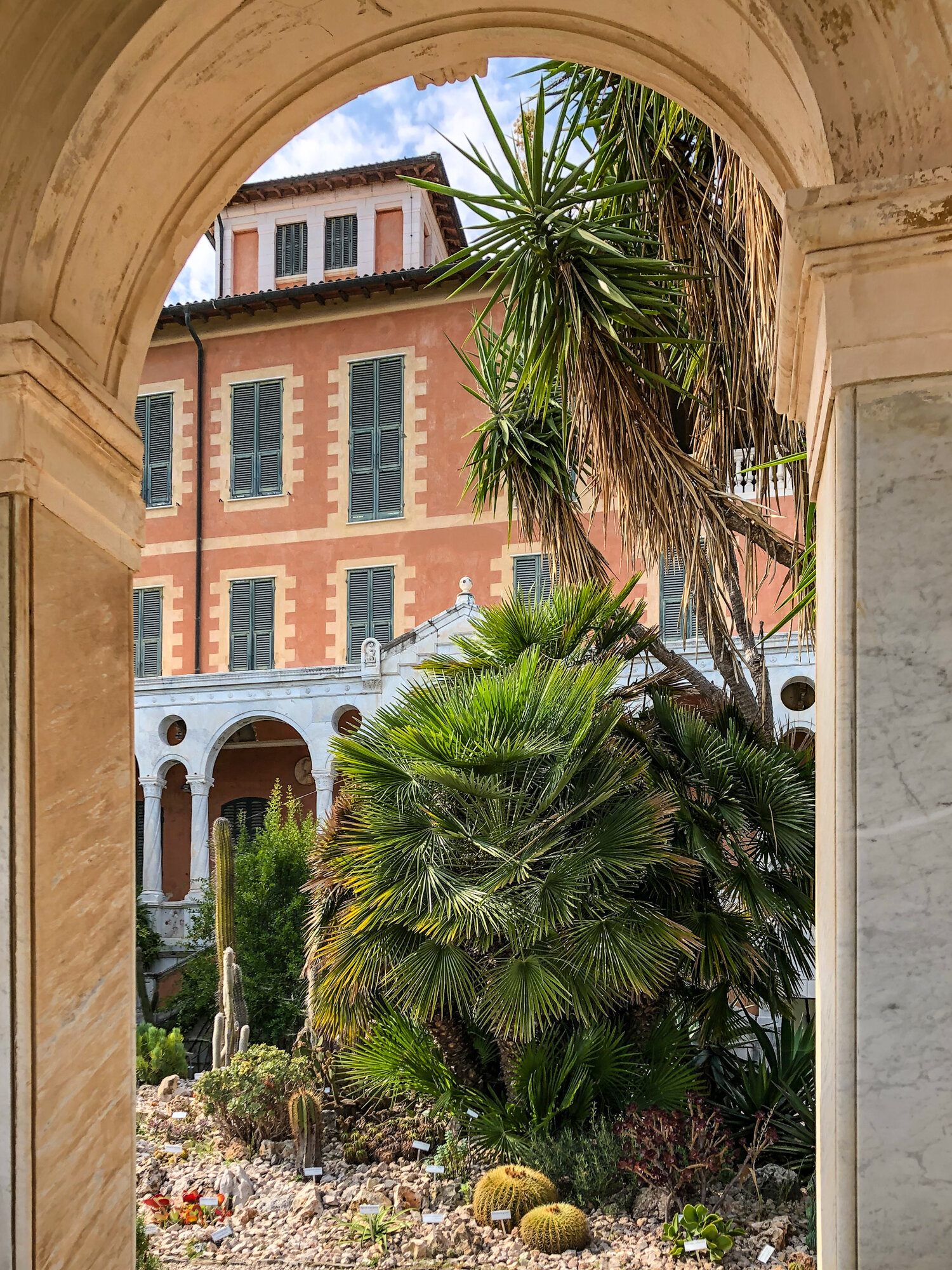
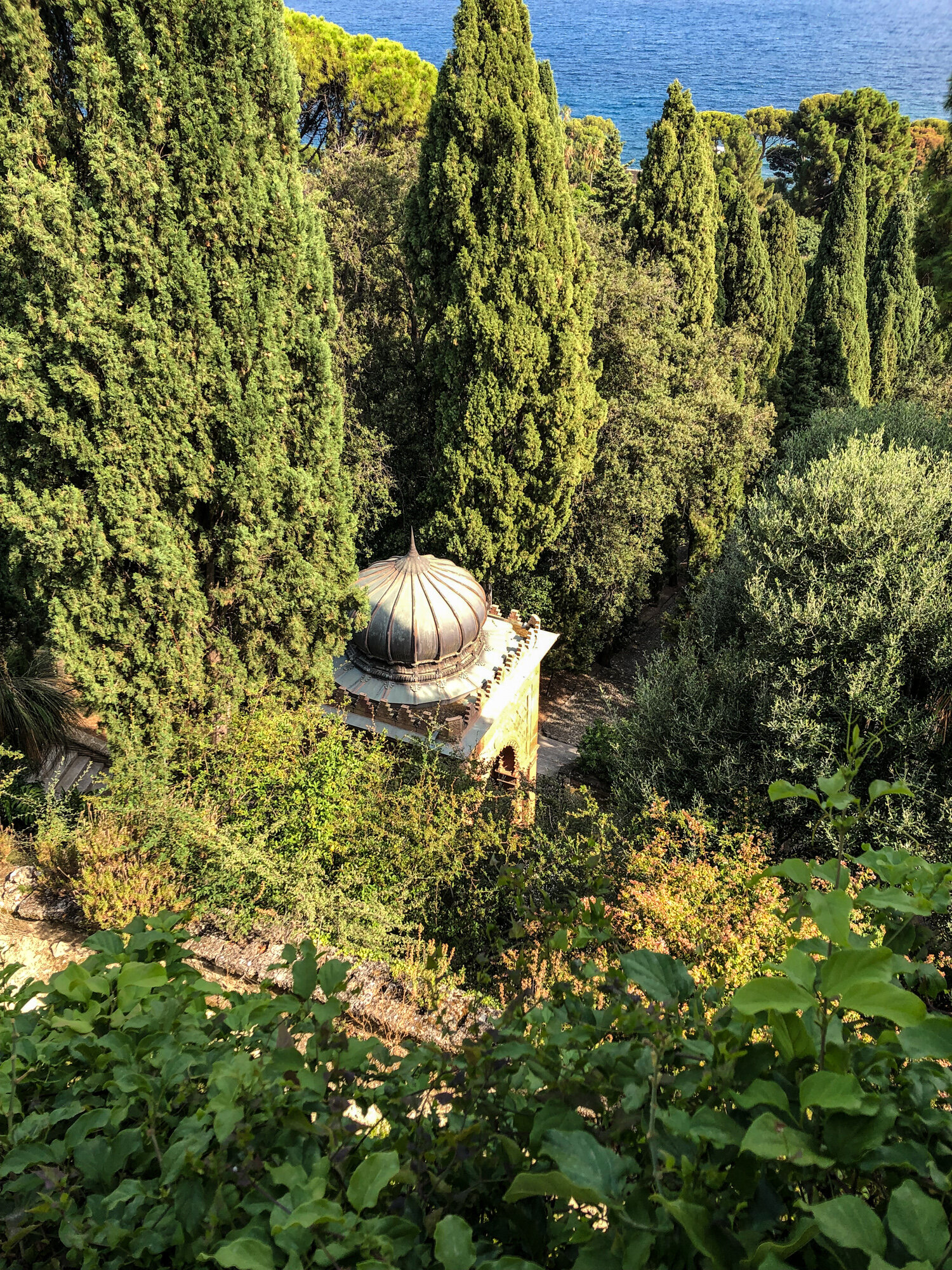
June 2019
The Early 18th Century English Garden
Taught at The Highgate Literary & Scientific Institution
From the formality of the Dutch garden designs of William and Mary at Kensington Palace and Hampton Court we will trace the development of garden design. Through the ‘transitional’ work of Charles Bridgeman to the apogee of the classical Arcadian landscape of William Kent, via Lord Burlington and the Grand Tour. Using influential and significant gardens we will look at the social and cultural aspects of their creation.
Gardens to be investigated include Hampton Court Palace, Kensington Palace, Stowe, Claremont, Rousham, Chiswick House.
Designers/influencers include George London and Henry Wise, Charles Bridgeman, Lord Burlington, William Kent, Alexander Pope, John Vanbrugh
January 2019
Italian Gardens of the 20th Century
Taught at Burgh House, Hampstead
This term we welcome the return of Garden Historian and Classical Archaeologist, Michael Turner who will be delivering a special lecture.
Course Outline
From the Florentine Anglo-American gardens we look to further corners of Italy to see English gardens. Frederick Stibberd and his English garden with temples, grottoes and fountains and the Sitwells of Derbyshire at Montegufoni. The botanical collections of La Mortola and Villa Taranto and Lord Lambton at Cetinale making an English garden in the 1970’s.
We will be visiting a botanical garden during the term.
The Villas and Gardens of the Italian City States
This term we will be joined by the prolific author, historian and critic, Tim Richardson who specialises in landscape gardens and art. He writes regularly for Country Life, The Daily Telegraph and Gardens Illustrated.
Course Outline
Starting in the North of Italy and ending in Sicily, we will discover the gardens of the House of Savoy. The lost or changed landscapes of 17th century Piedmont with the help of the Theatrum Sabaudiae. Looking beyond the Medici to the Strozzi and Sassetti clans and their villas. The magnificent Palazzo Farnese at Caprarola and the romantic island of Bisentina will reveal the gardens of the Farnese.
This term includes a visit to The National Gallery.
2018
Anglo-American gardens of Tuscany
A ten week course At Burgh House.
The course looks at the writers, garden designers & garden owners based in and around Florence at the turn of the 20th century. We will examine the Renaissance gardens & villas they brought back to life and the gardens of their own design. We shall be studying amongst others; the architect and garden designer, Cecil Pinsent; the art historian and connoisseur Bernard Berenson; the writer Iris Origo, from her childhood at Villa Medici in Fiesole to the creation of her own garden La Foce. The gardens we will be studying include I Tatti, La Pietra, Le Balze and La Gamberaia.
Villas & gardens of the Italian City States
A ten week course At Burgh House.
Rome, from the rediscovery of ancient sculpture and the construction of the Vatican’s Belvedere Court, to the gardens of the Villas Borghese & Doria Pamphili. We’ll also study the fascinating gardens in the states of Mantua, Ferrara and the Republic of Genoa & Naples.
The summer term alternates between lectures at Burgh House, followed by a garden trip the week after. This gives the group a wonderful opportunity to learn about a garden before a visit and enjoy each site with some background and context.
May 3rd Burgh House. The Gardens of Nancy Lancaster
May 10th Trip to Kelmarsh Hall.
May 17th Burgh House. St. Paul's Walden Bury, the French style & Sir Geoffrey Jellicoe.
May 24th Trip to St. Paul's Walden Bury.
May 31st Half term
June 7th Burgh House. Sir Fredrick Gibberd and The Gibberd Garden.
June 14th 10.30am. Private opening of The Gibberd Garden.
June 21st Burgh House. Gardens of the Oxford Colleges.
June 28th Garden trip. Trip to Oxford College gardens - This is a full day trip.
Quintessential English Gardens
January 2018
We are delighted to be joined by celebrated author and garden historian Helena Attlee, who will deliver a special lecture for both our courses in January. We meet in the comfortable and relaxed music room of Burgh House, coffee, conversation and special biscuits await you. No prior experience of garden history is necessary, please come and join us.
Gardens of the Italian Dynasties
Thursdays from 11th January 2018 at 10.30am - 12.30pm. 10 week course at Burgh House.
Starting in the North of Italy and ending in Sicily, we will discover the gardens of the House of Savoy. Investigating the lost or changed landscapes of 17th century Piedmont with the help of the wonderful volumes Theatrum Sabaudiae. The Dynasty of the Este’s and the 16th century ring of secret gardens, which once surrounded the walls of Ferrara will be covered. In the Tuscan countryside we look beyond the Medici to the Strozzi and Sassetti clans and the Strozzi villa at Santuccio and the Sassetti’s at Villa La Pietra.
Thursdays from 11th January 2018 at 1.30pm - 3.30pm. 10 week course at Burgh House.
A ten week course for new students. Our starting point will be the architecture of Palladio and the villas and gardens of the Veneto. Palladianism was to become the most influential style of the later sixteenth century. The classical nymphaeum of the Villa Barbaro will be decoded, identifying and interpreting the ten mythological figures and the iconographic scheme. The gardens of the Italian Lakes will look at the enchanted isles of the Borromeo family, Isola Bella and Isola Madre, and the renaissance detailing of the Villa d’Este and Villa Cicogna Mozzoni, with its fishponds and frescoes fresh from Ovid’s Metamorphoses.
Gardens of the Veneto
2017
Introduction to Italian Renaissance Gardens
Thursday 12th January 2017 at 1.30pm-3.30pm
A ten-week course which will introduce the gardens of France,
Russia, Germany and Austria. We begin with French gardens and
Marie de Médicis continuing through to the Parisian schemes
of George-Eugène Haussmann and the city parks of Edouard
André. After half-term we will investigate Catherine the Great,
Prince Pückler-Muskau and the Potsdam landscapes. The term
includes a garden visit.
European Gardens
Thursday 21st September 2017 1.30-3.3o - 10 weeks course at Burgh House.
Our introductory course will include the following topics: The Gardens of the Medici family, the rediscovering of Antiquity, Ancient Gardens and the Classics, Ovid’s Metamorphoses & Colonna’s Hypnerotomachia Poliphili & Utens’ Lunettes
Italian Renaissance Gardens
Thursday 21st September 2017 10.30-12.30 - 10 week course At Burgh House.
Our course for returning students will include: The Belvedere Court & Gardens of the Vatican Roman Baroque Gardens; Villa Borghese & Villa Doria Pamphili Mantua & Ferrara Gardens of the Republic of Genoa.
This term we have special lectures by Michael Turner, Classical Archaeologist & Garden Historian. The courses are taught in the comfortable and relaxed music room at Burgh House. No prior experience of Garden History is necessary. Please come and join us.
Thursday 12th January 2017 at 10.30am-12.30pm
A new ten-week course begins with an introduction to Palladio
and the villas and gardens of the Veneto. Further topics will include
Ariosto’s poem Orlando Furioso in relation to Mannerist gardens.
After half term we’ll examine the beautiful Northern Italian
lakes, the setting for some extraordinary gardens: Isola Bella,
Villa d’Este and Villa Cicogna Mozzoni.
We will be joined by guest lecturer Michael Turner, classical
archaeologist and garden historian, who will be focusing on mythology
and iconography in Renaissance gardens.
Italian Renaissance Gardens
Thursday 22nd September 2016 at 1.30pm-3.30pm
The course will cover:
The Dutch Golden Age, monarchy, politics and diplomacy
Tulip mania – diplomacy, horticulture & botany
Honserlaardijk, Zorgvliet & Het Loo
Dutch Moderninsm, Piet Oudolf & The New Wave
Landscape, Gardens & Painting, Islamic Gardens of Spain
Discoveries of the Conquistadors
The Hapsburgs & The Bourbons
European Gardens - Holland & Spain
This term there will be a morning lecture (10.30am-12.30pm) paired with a garden visit the following week. Our visits will include:
April 21st Burgh House lecture: Investigating the Swiss Garden
April 28th Visit to the Swiss Garden & Old Warden
May 5th Burgh House lecture: Discovering Hall Barn & Cliveden
May 12th Visit to Hall Barn & Cliveden
May 19th Burgh House lecture: The Rothschild's Ascott House
May 26th Visit to Ascott House
June 9th Burgh House lecture: Vita Sackville-West's Long Barn & Lord Astor's Hever Castle
June 16th Visit to Long Barn & Hever Castle
23rd June Burgh House lecture: Designer Tom Stewart Smith's gardens
30th June Visit to Broughton Grange
Summer 2016
Thursday mornings 10.30-12.30
A ten-week course which will introduce the gardens of France, Russia and Germany. We begin with French gardens and Marie de Médicis continuing through to the Parisian schemes of George-Eugène Haussmann and the city parks of Edouard André. After half-term we will investigate Catherine the Great, Prince Pückler-Muskau and the Potsdam landscapes. The term includes a garden visit.
Twentieth Century Gardens
Thursday afternoons at 1.30-3.30pm.
A ten-week course which will include such varied subjects as The Wild Garden, Gertrude Jekyll and Edwin Lutyens, the Italian Revival, the Country House Ladies, the English Garden Abroad and the Festival of Britain. The course will conclude with a garden visit.
We look forward to welcoming you to Burgh House.
Both courses cost £200.00 each, per ten week term.
European Gardens
2015
European Gardens - Holland & Spain
Thursday mornings 10.30-12.30
The themes and topics we will cover include:
Tulip mania – diplomacy, horticulture & botany
Honserlaardijk, Zorgvliet & Het Loo
Dutch Moderninsm, Piet Oudolf & The New Wave
Landscape, Gardens & Painting, Islamic Gardens of Spain
Discoveries of the Conquistadors, The Hapsburgs & The Bourbons
An introduction to Garden History
From the Picturesque controversy to
Rothchild-shire
Thursday afternoons 1.30-3.30 pm
This term will track the development of gardens from around 1800 to 1900 and will include:
Landscape in literature including the Gothic Novel with works of Horace Walpole, William Beckford, Thomas Love Peacock, Jane Austen & Tom Stoppard.
Rothschild-shire
William Morris and the Industrial Revoltion
Public Parks and the Landscape of Death
From the Wild Garden to the Festival of Britain.
10.30-12.30 pm
This eleven week term will track the development of gardens from around 1900 to 1950. The diverse themes and topics we will cover include: The Wild Garden, the Country House Ladies, the English Garden Abroad and will conclude with the Festival of Britain.
The Gardens of Louis XIV to the Picturesque.
1.30-3.30 pm
Covering the period of design from the era of the great French gardens of Le Nôtre to the Picturesque gardens of the nineteenth century. Topics will include Louis XIV as Apollo, horticulture, plant collections and Dutch flower paintings.
The summer presents the opportunity to visit special historic gardens and houses within London and the Home Counties. We look forward to welcoming you to Burgh House.
View fullsize
View fullsize
2014
Term 1
Will track the development of gardens from the medieval era to the Restoration of the Monarchy in 1660. Some examples of the diverse themes and subjects to be investigated are:
• Religious and political symbolism of Elizabeth 1st
• The lost gardens of Nonsuch, Wimbledon and Whitehall
• The Renaissance in Italy and France
• Grottoes, automata, fountains and statuary
Term 2
11 weeks including a site visit
Will cover the period of design from the era of the great
French gardens of Le Notre to the Picturesque gardens
of the nineteenth century.
During this term topics will include:
• Louis XIV as Apollo
• Horticulture, plant collections and Dutch flower paintings
• The South Sea Bubble
• Hogarth’s Line of Beauty
The summer presents the opportunity to visit special
From the Medieval to the Picturesque
This eleven week term will track the development of gardens from around 1800 to 1900. The diverse themes and topics we will cover include:
• The Picturesque Controversy
• The Gothic Novel and William Beckford
• Landscape in literature examining the work of authors such
as Thomas Love Peacock, Jane Austen and Tom Stoppard
• Victorian eclecticism – Dutch, French, Egyptian, Swiss,
Chinese, Spanish and the Italian garden via South America
revisited!
• Rothschild-shire
• William Morris and the Industrial Revolution
• Public Parks, Temperance and the Landscape of Death
This term includes a garden site visit
Term 2 which commences in January 2015 is a further eleven weeks which students will have the opportunity to sign up for later this year and it will include such varied topics as:
The Wild Garden, the Country House Ladies, the English Garden Abroad and will conclude with the Festival of Britain.
